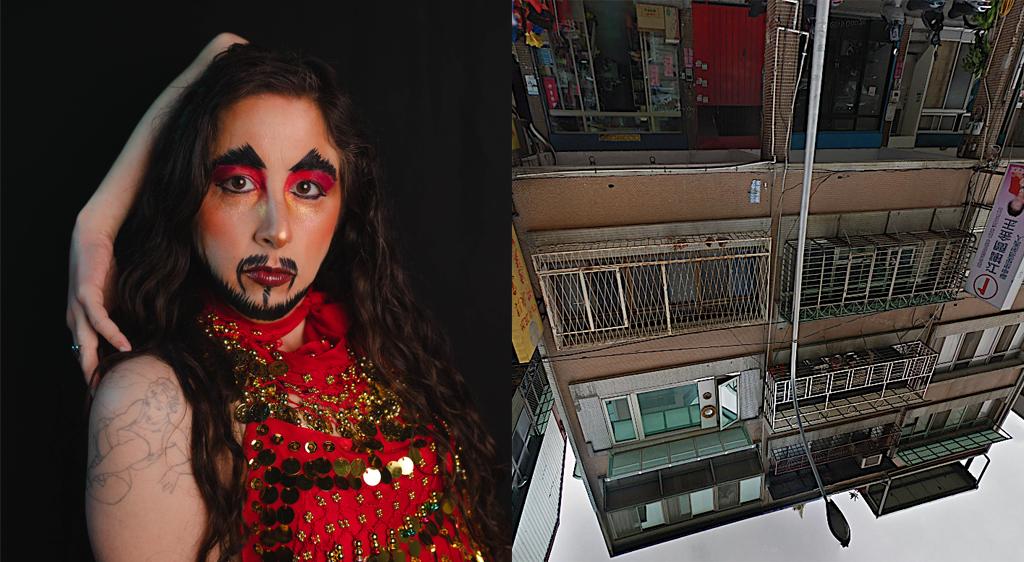Hi friends! I spent last three months living in India, co-writing the new Nautanki performance script for the “Performing Diaspora” with my father– the renowned Nautanki artist, Pundit Ram Dayal Sharma, I loved my time in India. It was so much fun, and a learning experience, working with my father on this script that focuses on the issue of Indian men living in the U.S., who go back to India to get married to young Indian women and receive huge dowries, and then leave their wives in India waiting endlessly for them, while they have a girlfriend or a partner in the U.S. My father appreciated creating this script with me because it not only brings light to a contemporary issue, but also helps Nautanki as a performance form to update itself to new emerging issues in the society not only in India but globally. As far as I know this is the first Nautanki script that talks about a global social issue connected to Indians and Indian immigrants in other countries. Thus, it is a beginning of making Nautanki global!

My father and guru Pundit Ram Dayal Sharma performing in Nautanki "indal Haran" recently

Devendra (in front) working with his father on the Nautanki for Performing Diaspora-- "Mission Suhani"
I am giving below the summary of the storyline that we created as part of our Nautanki script. As Nautanki has a lot of humor as a performance form, we have used lot of humor and farce in the script to raise this issue in a non-threatening way. I would love if you—the readers of this blog could give us some suggestions on how and what we can do to help resolve this social problem and help the women who are suffering this injustice. If you want, you can also share your own experiences of a similar situation. Just as a clarification, I am definitely not saying that all Indian men are leaving their wives in India. In fact only a small numbers do this. Nevertheless, it poses a problem to the Indian Diaspora living in the U.S and their relatives in India.
Title: “Mission Suhani”
Storyline: Suhani’s parents arrange her marriage with a an N.R.I. (Non-Resident Indian) named Chaliya, who is working in the U.S.A. Chaliya comes to India, Marries Suhani, takes a huge dowry ($20,000) and flies back to San Francisco (where he lives) on the same night. He does not even see Suhani’s face properly. Suhani keeps waiting for him but he does not return. Her parents abandon all hopes but Suhani is a strong woman. She takes the bold decision to travel to the U.S. to find her husband and claim her rightful place with him. Her parents are frightened on her decision. They discuss with her all the dangers of going to a foreign country alone. Suhani tells them that one of her friends Lata lives in the U.S. with her husband (another N.R.I.). She informs her parents that She would live with them and they would help her to find her husband. Her parents reluctantly agree.
After reaching the U.S., Suhani meets Lata. Lata introduces Suhani to her husband and also to her brother Devesh who is working in the U.S. and still unmarried. Actually Lata was not in touch with Suhani for a long time and was actually thinking that Suhani would be a good match for her brother. However, after listening to Suhani’s story, she had to of course abandon that thought. Lata and her brother promises Lata all help to find her husband.
Meanwhile Chaliya has a girlfriend in the U.S. who does not know that Chaliya is already married. From time to time, she urges Chaliya that they should get married but he does not pay attention to her. He has a good business but he is heavily in gambling and drinking. Devesh, while making inquiries about Chaliya, finds out that he actually knows him through other friends. In fact Chaliya is famous in the local community for his errant ways. Devesh also finds out about Chaliya’s girlfriend and hesitantly tells Suhani about the bitter truth. Suhani is heart-broken but somehow she pulls herself together. She decides that she does not want to get back with Chaliya but she becomes firm about getting back the hard-earned money that Chaliya swindled from her parents in the form of dowry.
Suhani and Devesh makes a plan. Devesh knows that Chaliya and his girlfriend frequently visit a particular dance club in San Francisco. Suhani dresses herself glamorously as a “hot” and “sexy” South Asian woman living in the U.S., and goes to that dance club with Devesh. In the club, she dances around Chaliya (who has never seen her bride properly) who obviously does not recognize her. He gets very attracted to Suhani and starts flirting with her. Suhani encourages this flirting and starts frequenting the dance club often and entices Chaliya firmly into her grip. Chaliya’s girlfriend notices this and one day there is a big fight between the two. Chaliya never wanted to marry his girlfriend in the first place, and uses this as an excuse to break up with her. Now he is totally after Suhani. But Suhani says that she has come to the U.S. to earn money because her parents are in heavy debt of $20,000, and she wants to help them repay that debt. Before earning that money she cannot of think of anything else. Chaliya who is a rich man says that it is not a problem, and gives $20,000 to Suhani.
Once Suhani gets the money, she calls Devesh, who comes with other community members, and asks Chaliya if he is married. Chaliya does not give a straight answer. Now Suhani confronts Chaliya and discloses her real identity. Chaliya is shocked and becomes afraid that he may be turned into police as all the community members are on the side of Suhani. He accepts his mistake and begs Suhani to come back to him as his legitimate wife. However, Suhani is no mood to pardon Chaliya. She and Devesh have come close during these days. She gives divorce to Chaliya. Devesh and Suhani marry, leaving Chaliya high and dry! — Scripts Ends.
Apart from creating this script, I spent my time in India, performing in traditional Nautankis in various festivals. The National Festival of Nautanki in the northern city of Lucknow was one of them. In this festival all the current major troupes of Nautanki performed. It was a great learning and enjoyable experience performing in this festival with my troupe. I met many of the present day doyens of Nautanki singing and had discussions with them on how to preserve Nautanki from the onslaught of modern media such as cable television and DVDs. Of course as an artist, I listened to their singing and thoroughly enjoyed them. I am posting below a few photos of me singing as part of this festival. I hope you will enjoy them too ☺!

Devendra performing with his father's troupe in the National Festival of Nautanki in Lucknow , India in July this year
Share This!
More Good Stuff
‘Border / Line خط التماس’ by Jess Semaan and Halim Madi & ‘Sa Ating Ninuno (To Our Ancestors)’ by Kim Requesto December 5-6 & 12-13,
Unsettled/Soiled Group is a group of East, Southeast, and South Asian diasporic movers, makers, and settlers on Ramaytush and Chochenyo Ohlone land. Unsettled/Soiled Group is led by June Yuen Ting, one of CounterPulse's 2022 ARC Performing Diaspora artists and will debut Dwelling for Unsettling alongside VERA!'s Try, Hye!, Thursday through Saturday, December 8-10 & 15-17, 2022
Try, Hye! by Vera Hannush/VERA! & Dwelling for Unsettling by Unsettled/Soiled Group December 8-10 & 15-17, 2022 // 8PM PT // 80 Turk St, SF




i can’t help but be envious (in all the good ways) that you come from a direct familial line of this art form. i guess that circumvents some of those questions that i often deal with like — does this form (Japanese classical dance) really belong to me? what do i need to do to be able to claim it in some way?
at this time in Japan, it seems the answers include more than technical or spiritual commitments — there’s a quantitative commitment of money (for lessons, licenses, association membership fees) and time (to be available to support all of your teacher’s activities). which can feel prohibitive…if not classist.
do you have any questions when it comes to
“who am i in this tradition? this art form?
roko